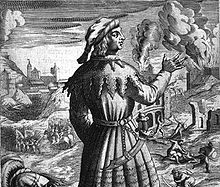| Charles I | |
|---|---|

| |
| Charles I | |
| King of Anglia | |
| Reign | 1099 - 3rd May, 1130 |
| Predecessor | Cnut II |
| Successor | Cnut III |
| Count of Flanders | |
| Reign | 17th July, 1119 - 3rd May, 1130 |
| Predecessor | Baldwin VII |
| Successor | Cnut III |
| Born | 1083 Denmark |
| Died | 1130 Bruges, Flanders |
| Spouse | Alftruda Sweynsdotter |
| Issue | Cnut III Karlsson Adela Karlsdotter |
| Full name | |
| Karl I Knutsson | |
| House | Estridsson |
| Father | Cnut II Svendssen |
| Mother | Adela of Flanders |
Following the Second Danish Invasion the Anglian crown passed into the Estridsson dynasty. Cnut II made peace with Edgar II of Wessex, effectively endorsing their takeover of Mercia, and reaffirmed the rights of the nobles and the basic right to convene the Witenage. Finally his only son, Karl, or Charles I, was married to Alftruda, Sweyn II's daughter. Then, wishing to return to Denmark, possibly as his health was failing, placed Charles on the throne as regent.
Charles would not have long to wait to take full the reins of power. His father died within a month and the realms he had built up were once again divided. His half-uncles Eric I and Niels I took Denmark and Viken respectively. Their respective animosity made it difficult for Charles' family to remain in Denmark and he was soon joined by his mother and twin sisters, Caecilia and Ingeborg. Caecilia was soon married to the heir to Northumbria, Ingeborg to the heir to Norfolk.
Cnut II had cultivated a close alliance with Flanders throughout his reign. So too did Charles as King of Anglia. His mother was sent to the Flemish court and in 1103 it played host to the delegations from the three Estridsson kingdoms: Anglia, Denmark and Viken. Count Robert II carefully arranged a peace between them; as long as all were ruled by Estridssons then there would be peace between them. And when in 1111, the young Baldwin VII became count he frequently solicited his elder cousin's advice. They met several times and when Baldwin VII died childless in 1119, fighting for the French king, Charles was the natural successor.
As ruler of a cross-channel territory Charles was restless, constantly touring his lands. He soon received a reputation for generosity and during the general famine of the early 1120s he distributed alms widely. He was well liked amongst the Anglian nobles as he generally let them get on with their own business, stepping in only to break up monopolies and ensure fair prices, whilst slowly pushing out the more corrupt officials. With the loss of Mercia Anglia was generally peaceful during Charles' reign and it only had occasional issue with disruption across the border as Wessex tore itself apart in constant revolt. He would face a much tougher challenge in Flanders.
Although Charles was widely proclaimed as Count of Flanders his nominal overlord there, Louis VI of France disagreed. He outlawed Charles and instead promoted the local Erembald family. This started the War of Flemish Succession (1119-1121). Charles quickly sought out allies and in late 1120 a Anglian army with Manx and Danish allies landed at Oostend. At the Battle of Bruges the forces of the Erembald family were defeated and Charles was endowed with the comital crown in Bruges on Christmas Day. In the new year his army advanced on Paris but were prevented by clashes with the French-Norman army. Charles and Louis would be reconciled in the Spring and Louis acquiesced to Charles's succession. Charles paid homage but even so French influence over the county soon ebbed away as Charles promoted his own trusted men to replace the Erembald's and their network.
In the last year of his reign Flanders was invaded by Normandy on spurious grounds and Charles rushed across the channel to defend his county. The haste possibly ruined his health and he would die in Bruges only a week after Louis VI arranged a peace between the two. Charles's eldest son Cnut would succeed to both the Anglian and Flemish thrones.
| ||||||||||||||||||||||||||||||||||
| ||||||||||||||||||||


